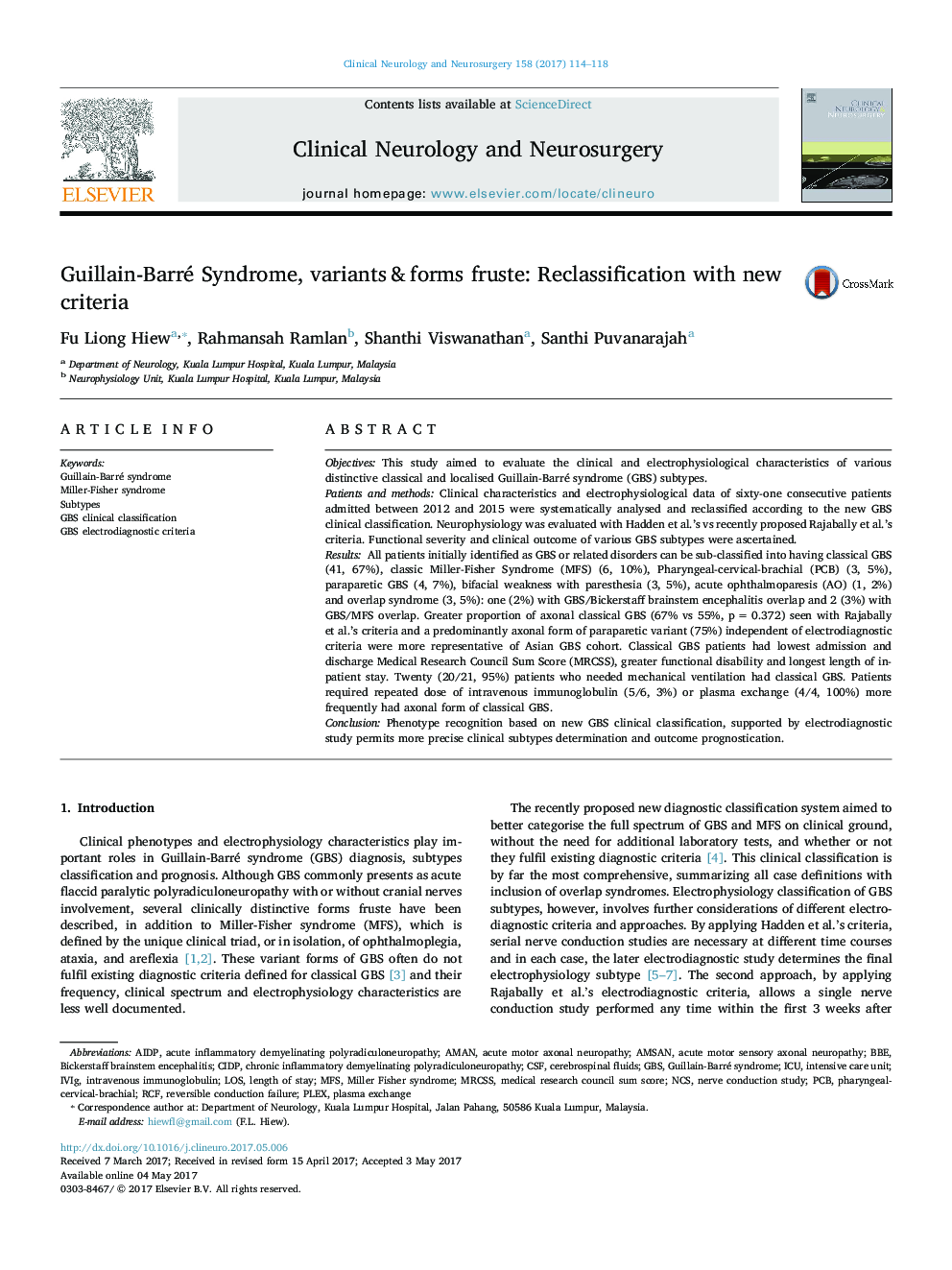| کد مقاله | کد نشریه | سال انتشار | مقاله انگلیسی | نسخه تمام متن |
|---|---|---|---|---|
| 5627070 | 1579664 | 2017 | 5 صفحه PDF | دانلود رایگان |

- Clinical presentation and phenotype recognition in Guillain-Barré syndrome (GBS) allow precise subtypes classification.
- Clinical subtypes classification in GBS, supported by electrophysiology study provide better outcome prognostication.
- Axonal form of classical GBS is associated with greater functional disability and poorer clinical response to treatment.
ObjectivesThis study aimed to evaluate the clinical and electrophysiological characteristics of various distinctive classical and localised Guillain-Barré syndrome (GBS) subtypes.Patients and methodsClinical characteristics and electrophysiological data of sixty-one consecutive patients admitted between 2012 and 2015 were systematically analysed and reclassified according to the new GBS clinical classification. Neurophysiology was evaluated with Hadden et al.'s vs recently proposed Rajabally et al.'s criteria. Functional severity and clinical outcome of various GBS subtypes were ascertained.ResultsAll patients initially identified as GBS or related disorders can be sub-classified into having classical GBS (41, 67%), classic Miller-Fisher Syndrome (MFS) (6, 10%), Pharyngeal-cervical-brachial (PCB) (3, 5%), paraparetic GBS (4, 7%), bifacial weakness with paresthesia (3, 5%), acute ophthalmoparesis (AO) (1, 2%) and overlap syndrome (3, 5%): one (2%) with GBS/Bickerstaff brainstem encephalitis overlap and 2 (3%) with GBS/MFS overlap. Greater proportion of axonal classical GBS (67% vs 55%, p = 0.372) seen with Rajabally et al.'s criteria and a predominantly axonal form of paraparetic variant (75%) independent of electrodiagnostic criteria were more representative of Asian GBS cohort. Classical GBS patients had lowest admission and discharge Medical Research Council Sum Score (MRCSS), greater functional disability and longest length of in-patient stay. Twenty (20/21, 95%) patients who needed mechanical ventilation had classical GBS. Patients required repeated dose of intravenous immunoglobulin (5/6, 3%) or plasma exchange (4/4, 100%) more frequently had axonal form of classical GBS.ConclusionPhenotype recognition based on new GBS clinical classification, supported by electrodiagnostic study permits more precise clinical subtypes determination and outcome prognostication.
Journal: Clinical Neurology and Neurosurgery - Volume 158, July 2017, Pages 114-118